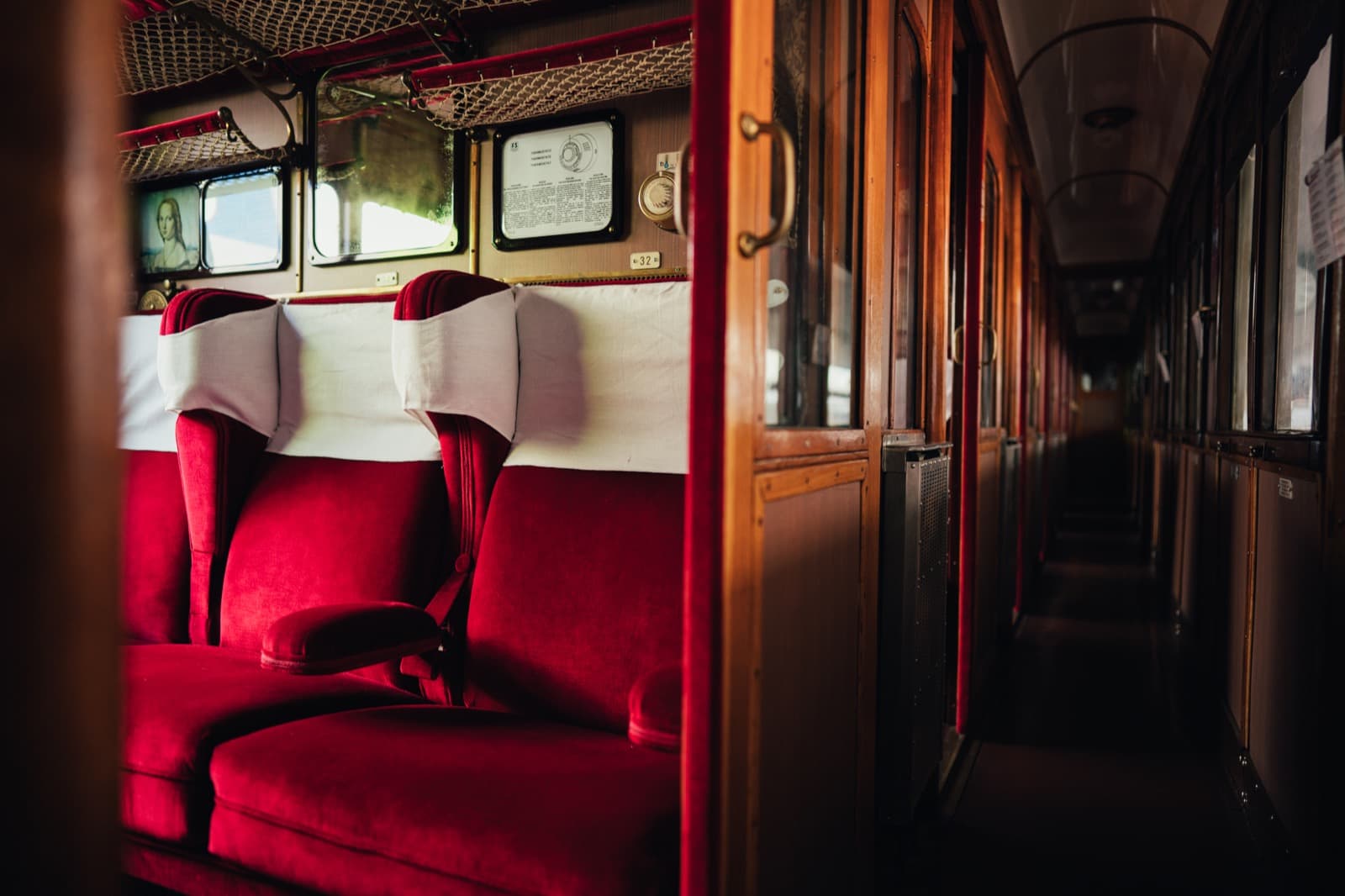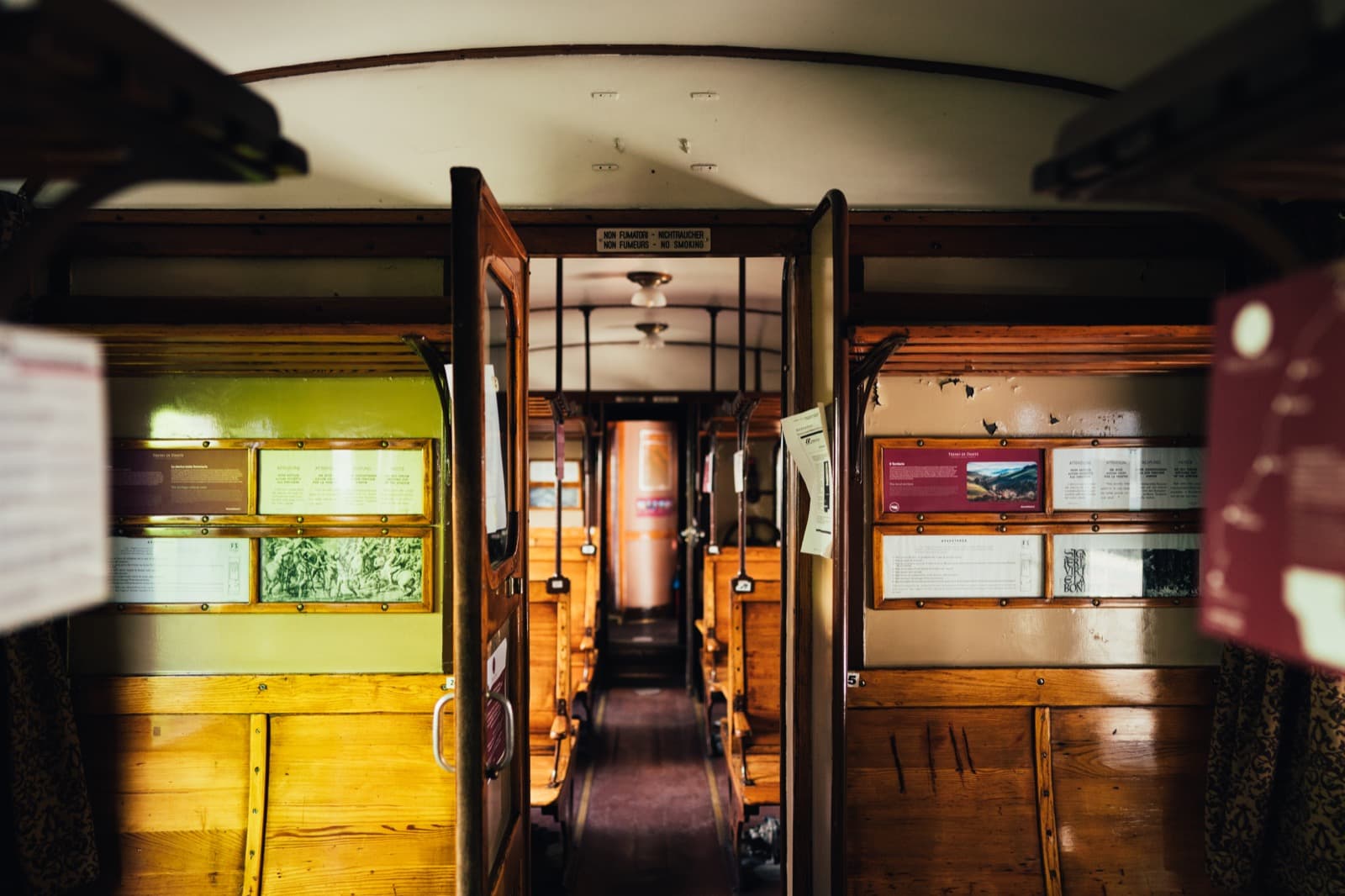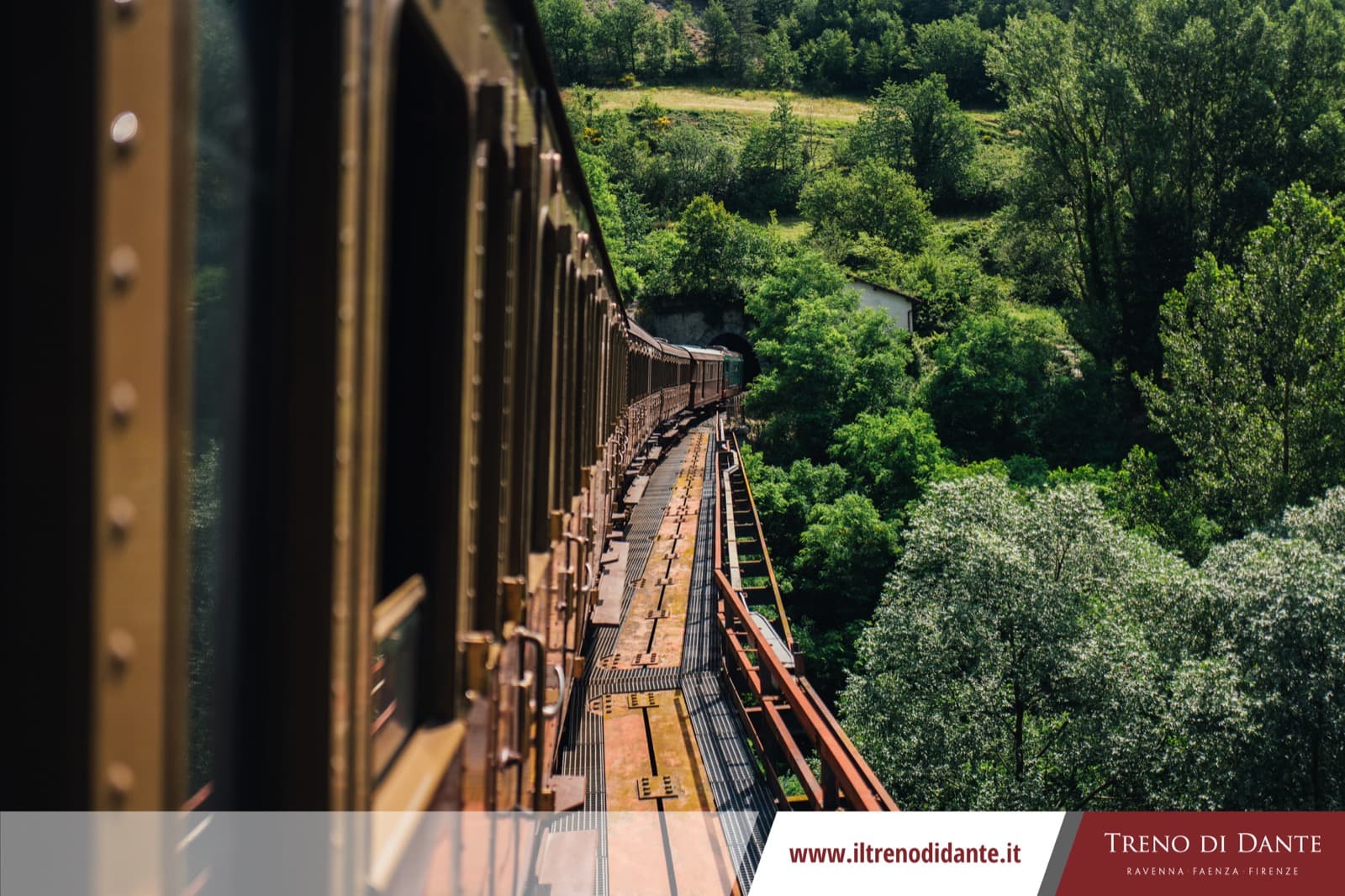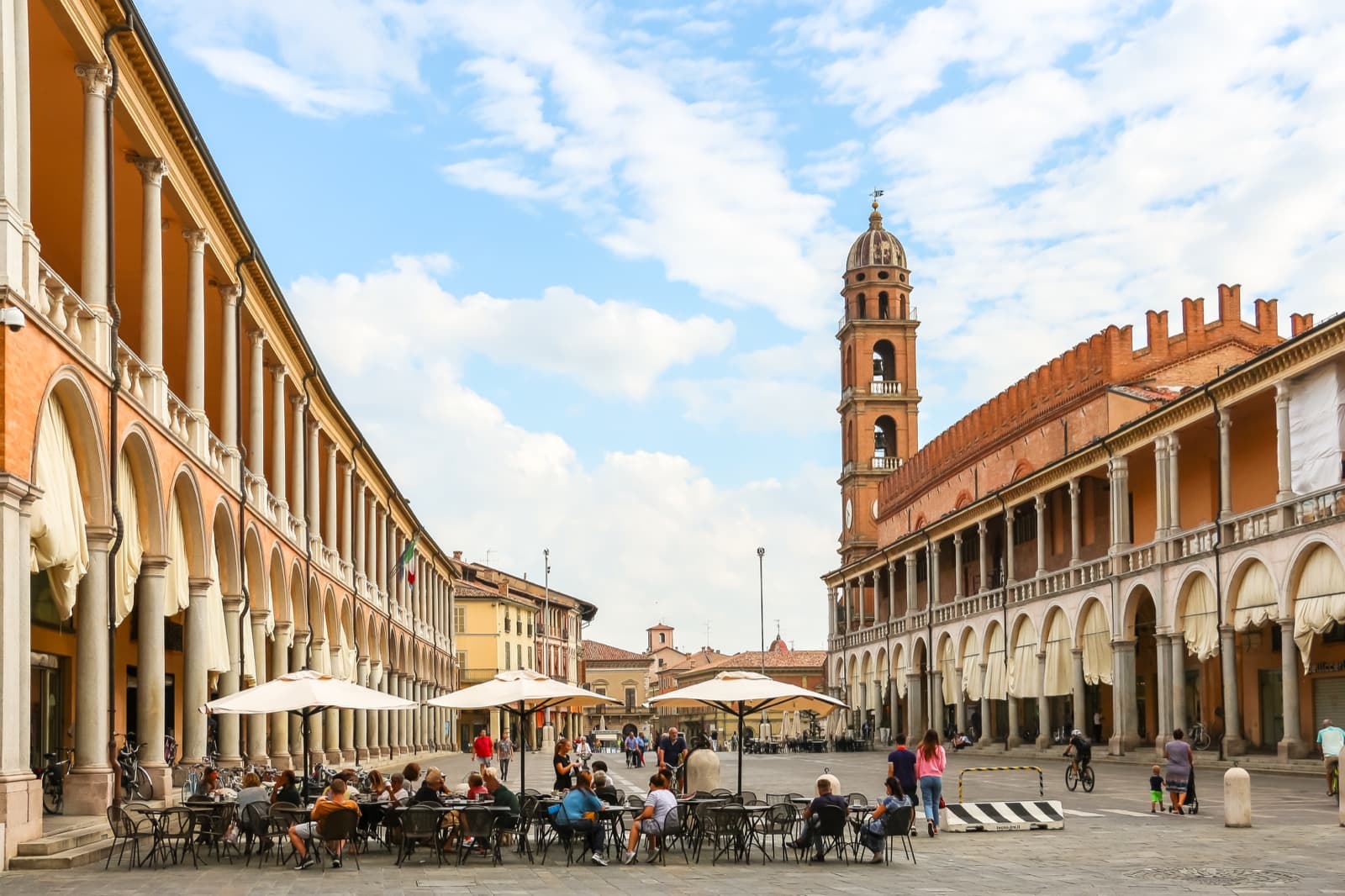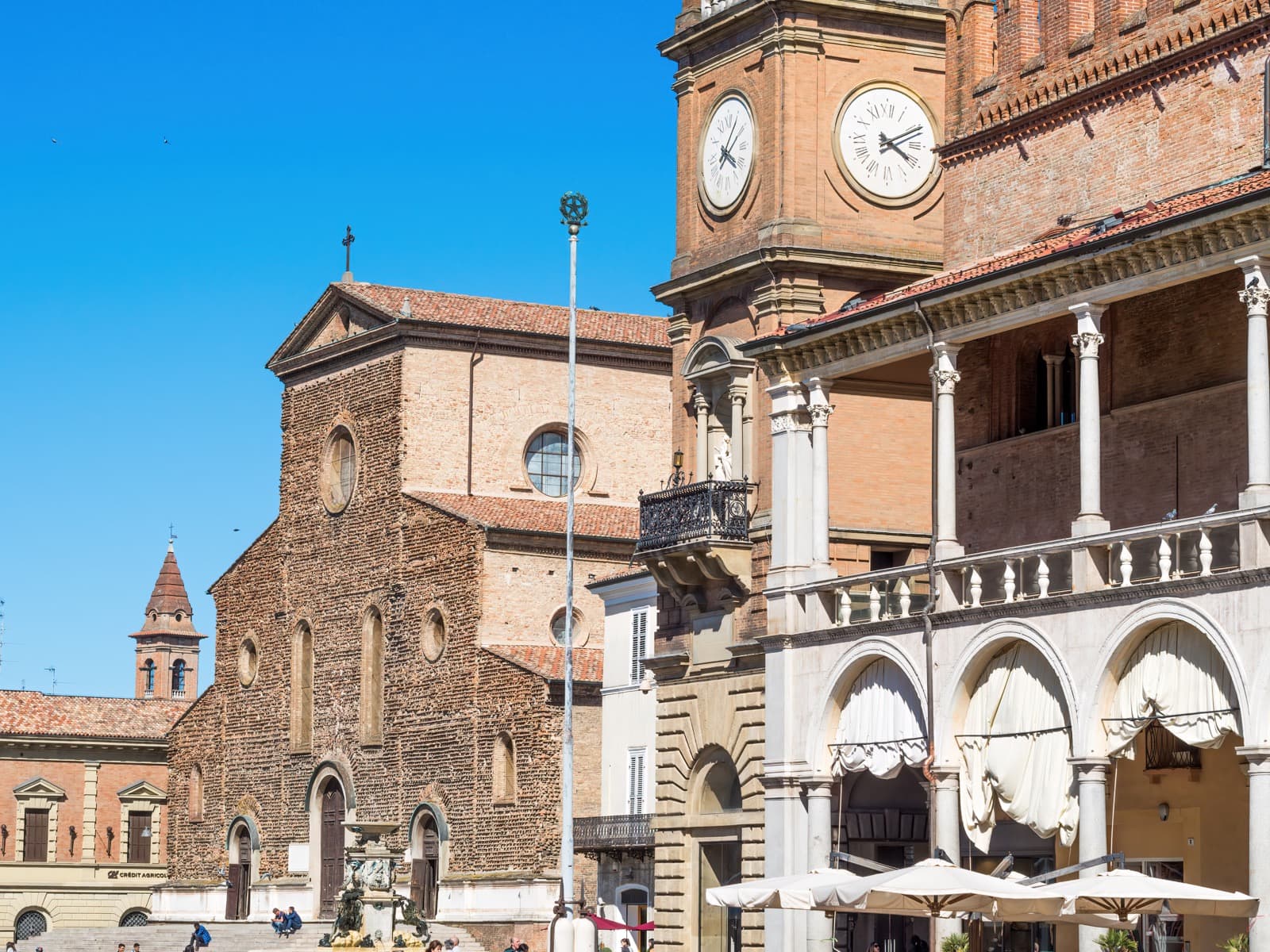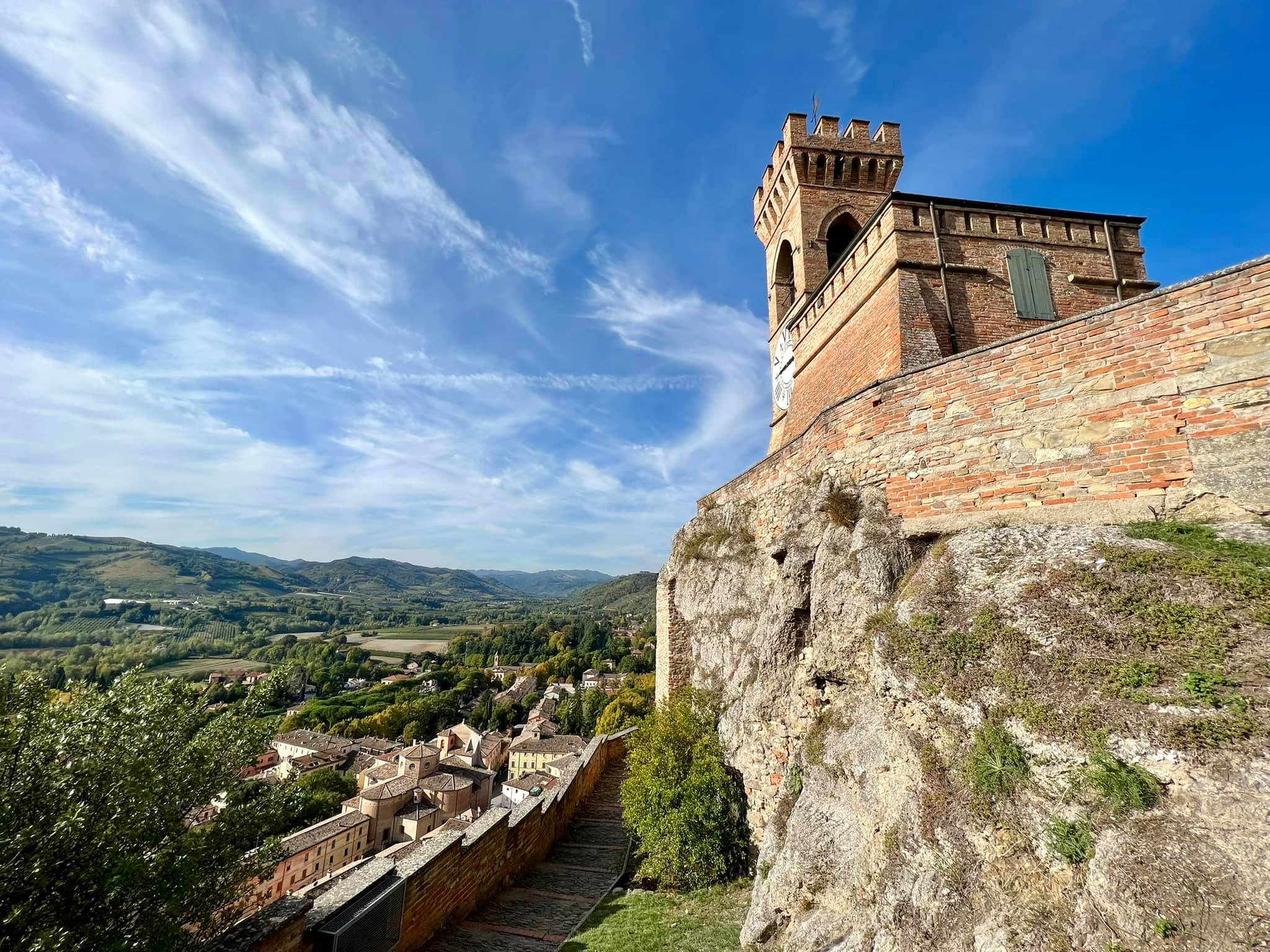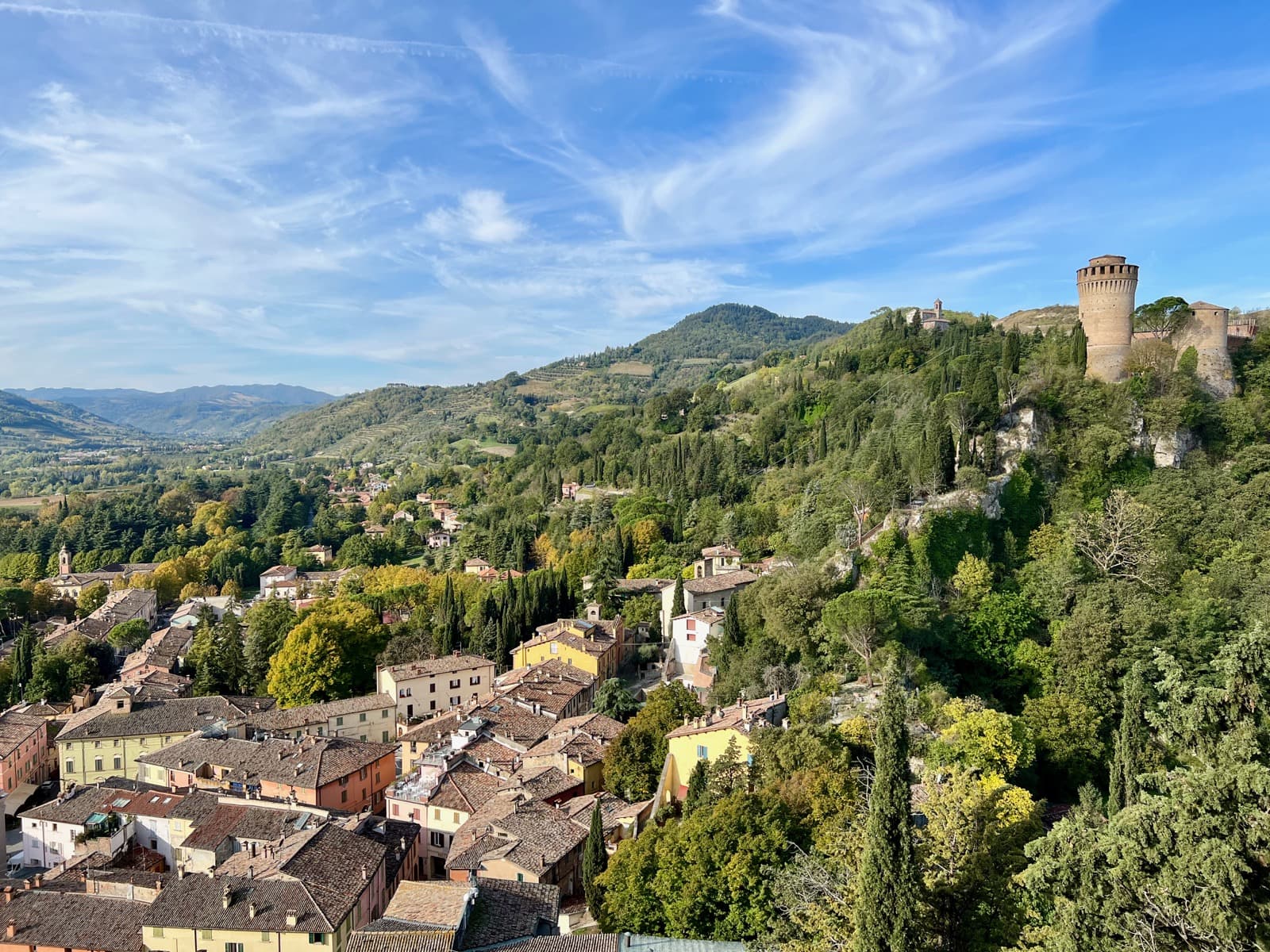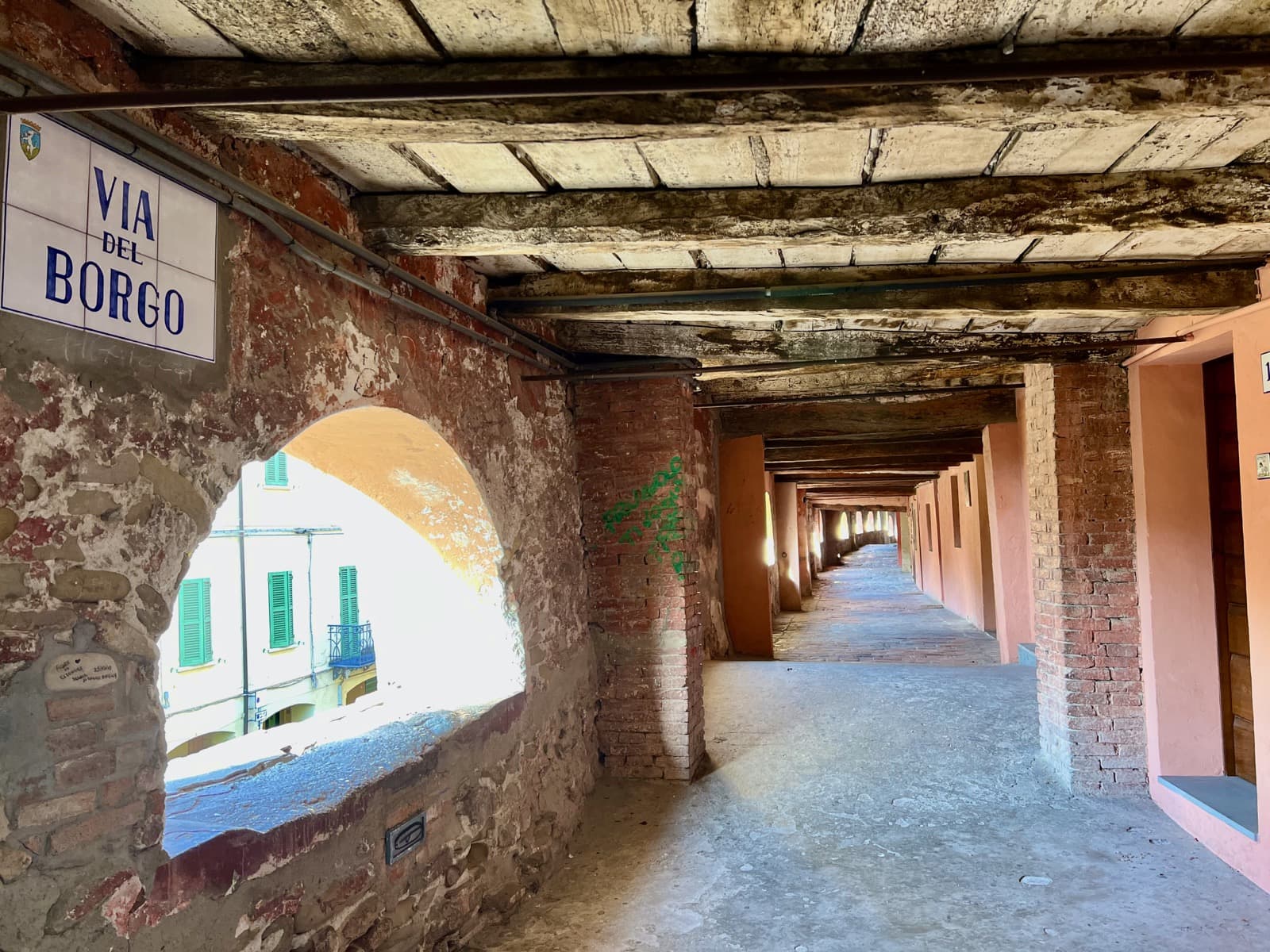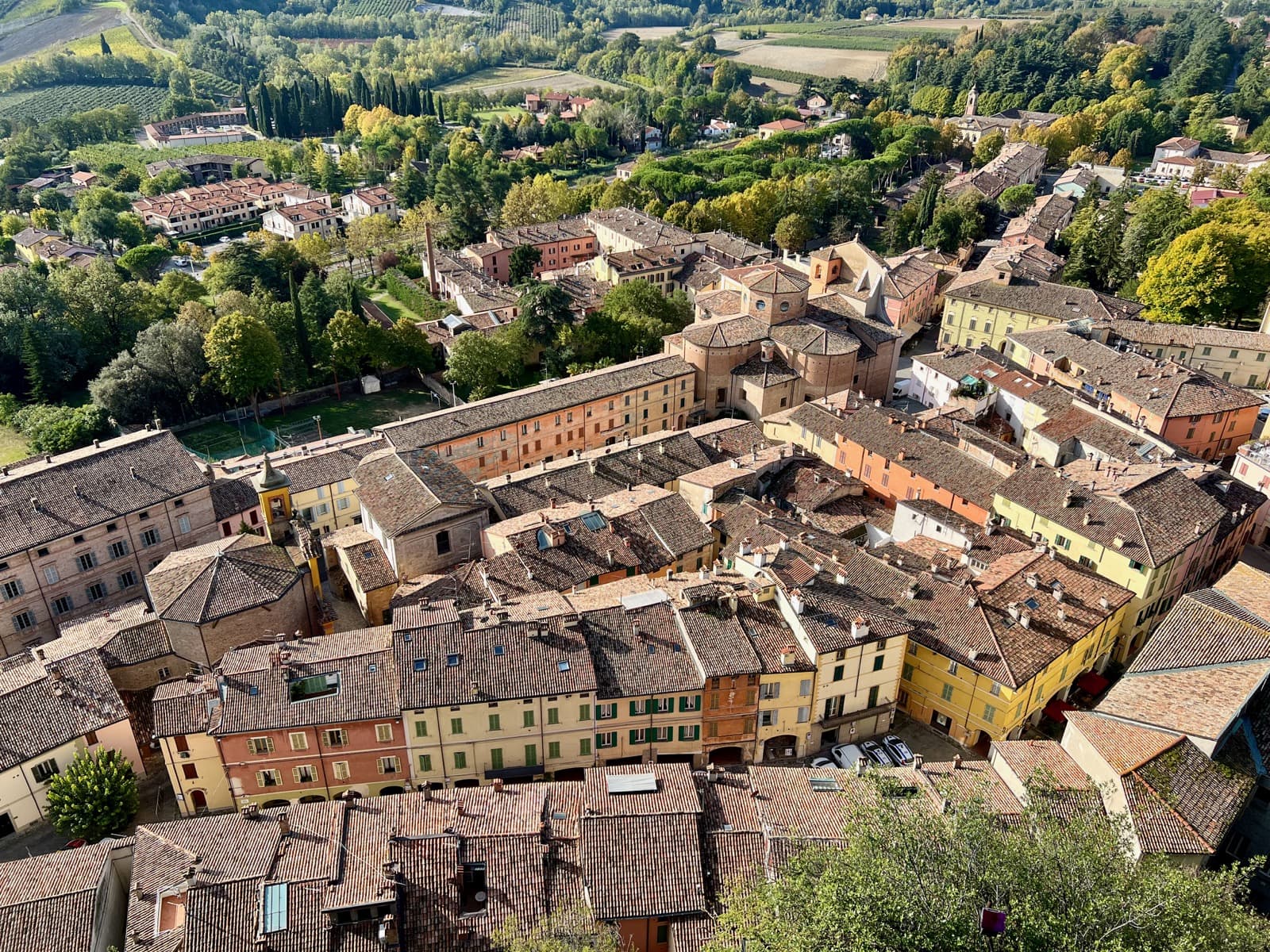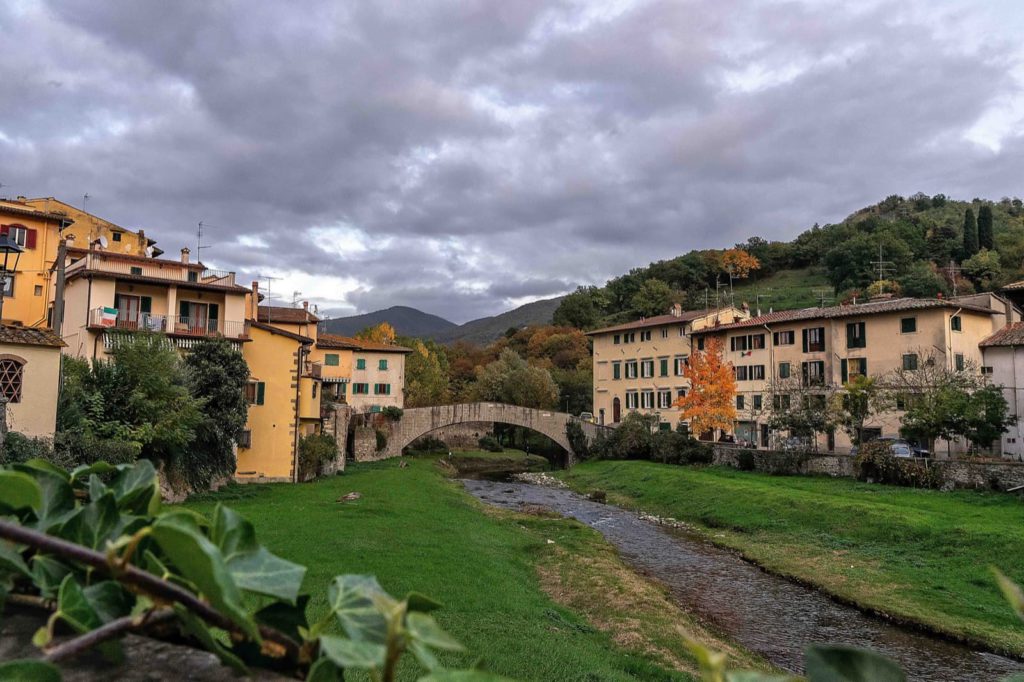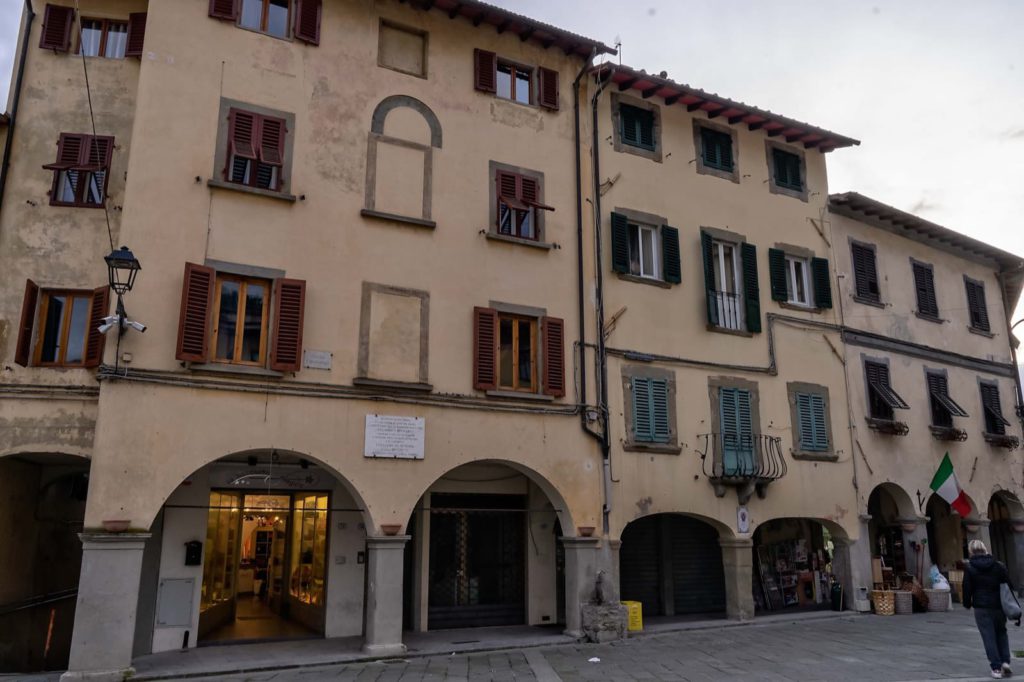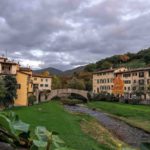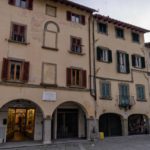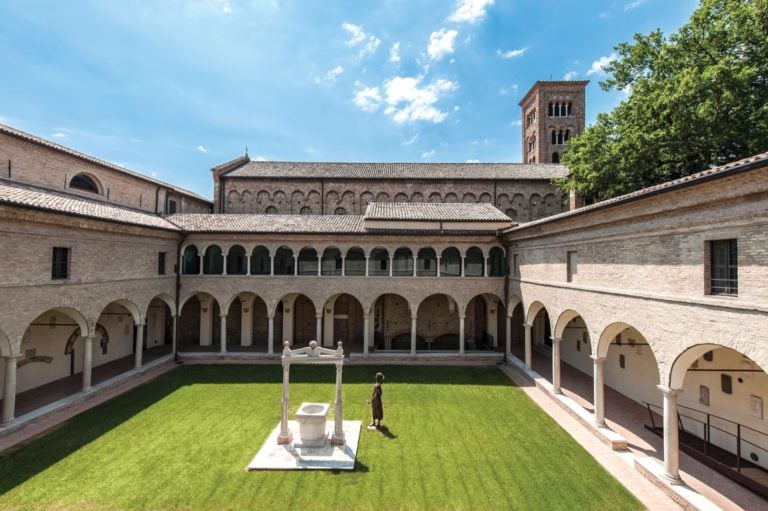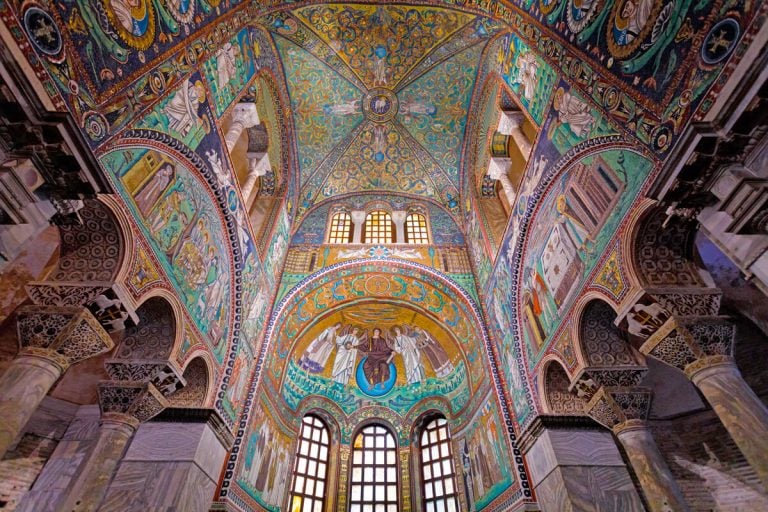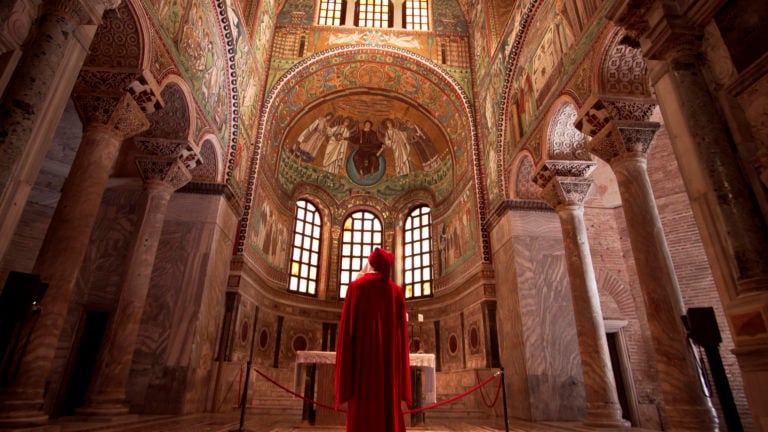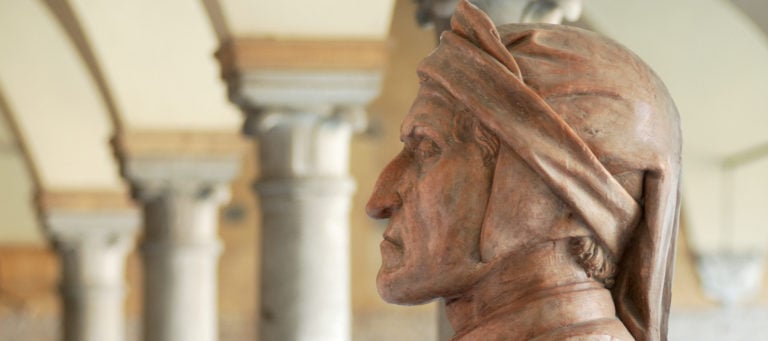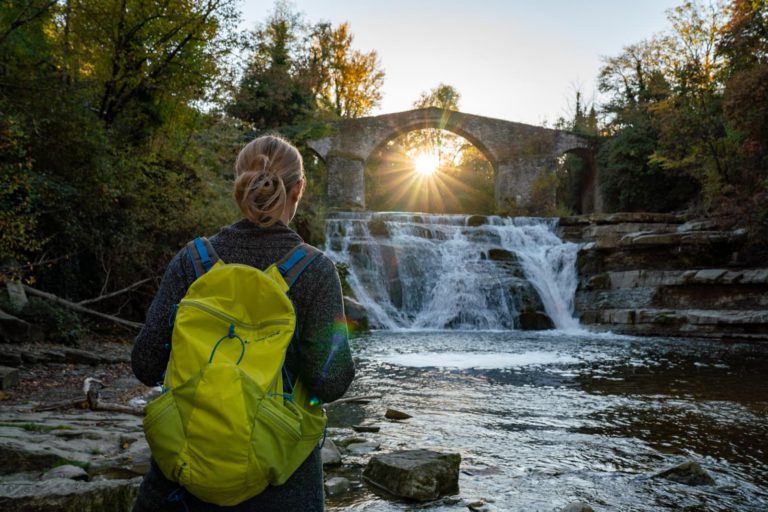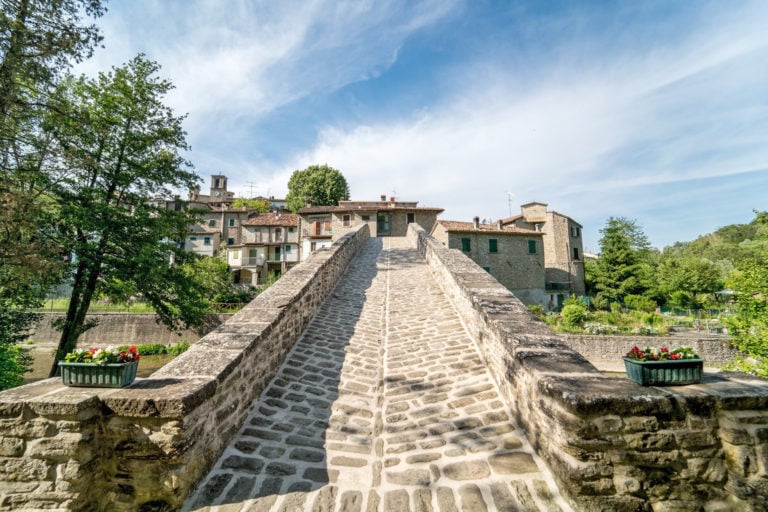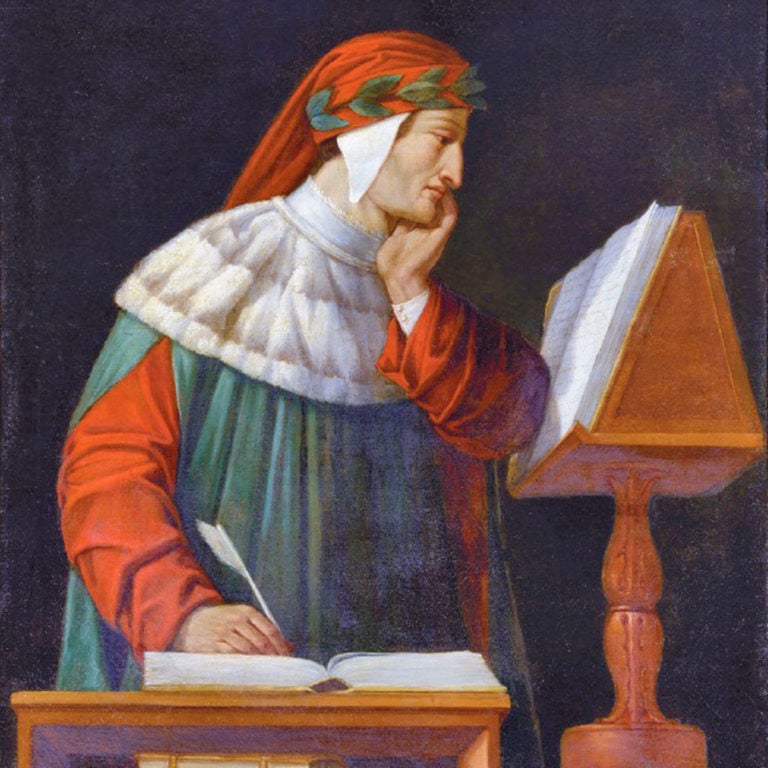Dante, or “the Supreme Poet”, as he’s often called in Italy, is considered the father of the Italian language. Moreover, his Divine Comedy is regarded as one of the greatest literary masterpieces of all time.
The Roads of Dante, Lonely Planet’s Best in Travel for Sustainability 2021, allows you to retrace the places visited during the Poet’s exile, between Emilia-Romagna and Tuscany.
A slow journey, from Ravenna to Florence, between nature and culture.
The Roads of Dante: the route
Created in 2012, the Cammino di Dante is a circular route that connects Ravenna, where the Poet is buried, to Florence, Dante’s birthplace, and then returns to Ravenna following a different itinerary.
In all, the circuit covers about 400 km. It’s a fantastic journey across the Apennines and Casentino’s beautiful natural landscapes, passing through delightful villages where time seems to have stopped. If you’re a slow traveler and active holiday lover, the Roads of Dante can be traveled on foot or by bike.
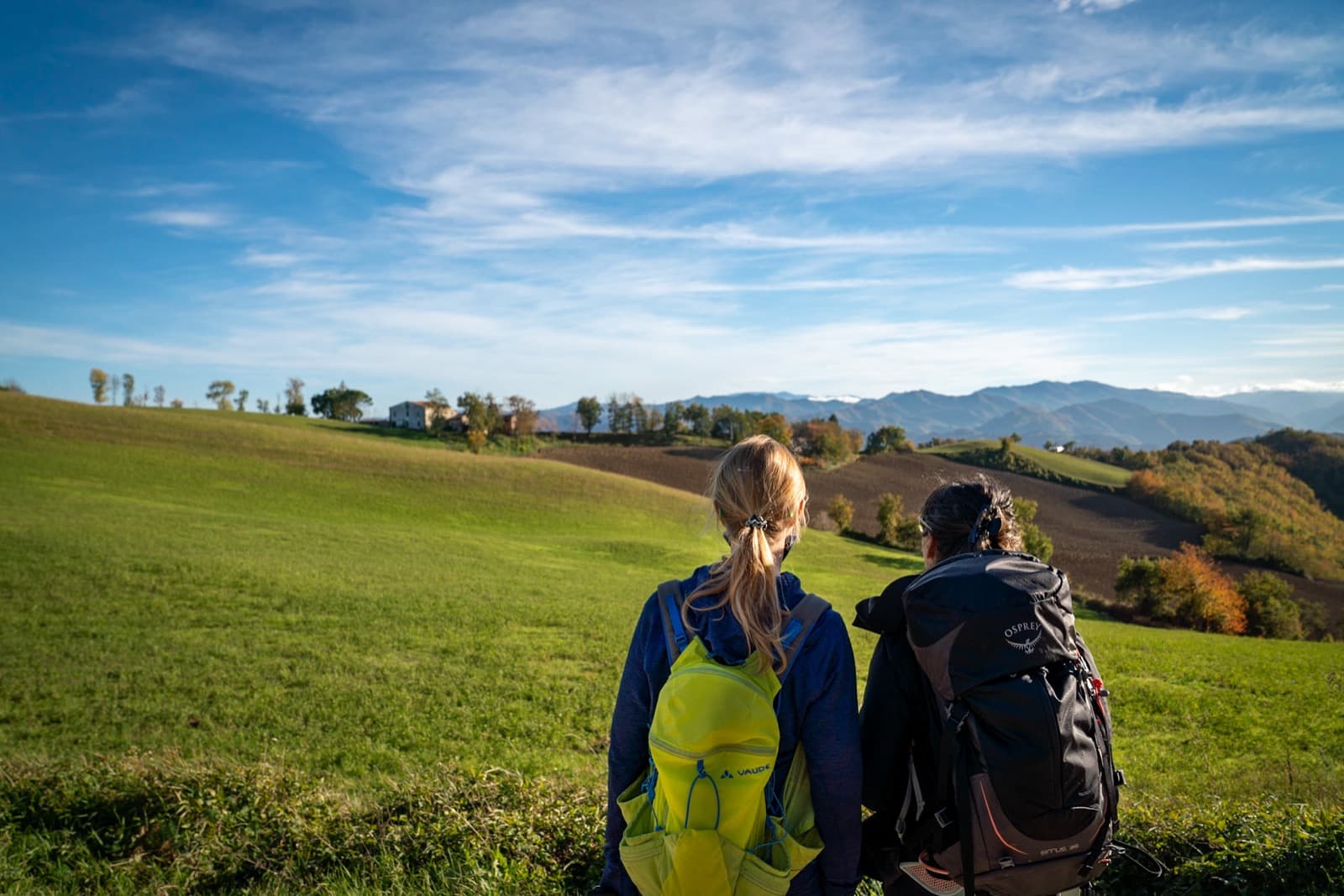
An excellent alternative is traveling by train, possibly enriching the stages with short walks in the surroundings. The little train that connects Faenza to Florence, in its slowness, offers glimpses of great beauty among rolling hills, olive groves, and forests.
Ravenna: Dante's tomb and the superb Byzantine mosaics
Dante’s exile began in 1301, and despite numerous attempts, the Poet never managed to return to Florence. After numerous wanderings, in 1318, Dante arrived in Ravenna, where he remained until he died in 1321.
Dante’s neoclassical tomb in Ravenna represents the starting point, even symbolic, of the Cammino di Dante.
If this is your first time in Ravenna, you absolutely cannot miss a visit to the beautiful Byzantine mosaics.
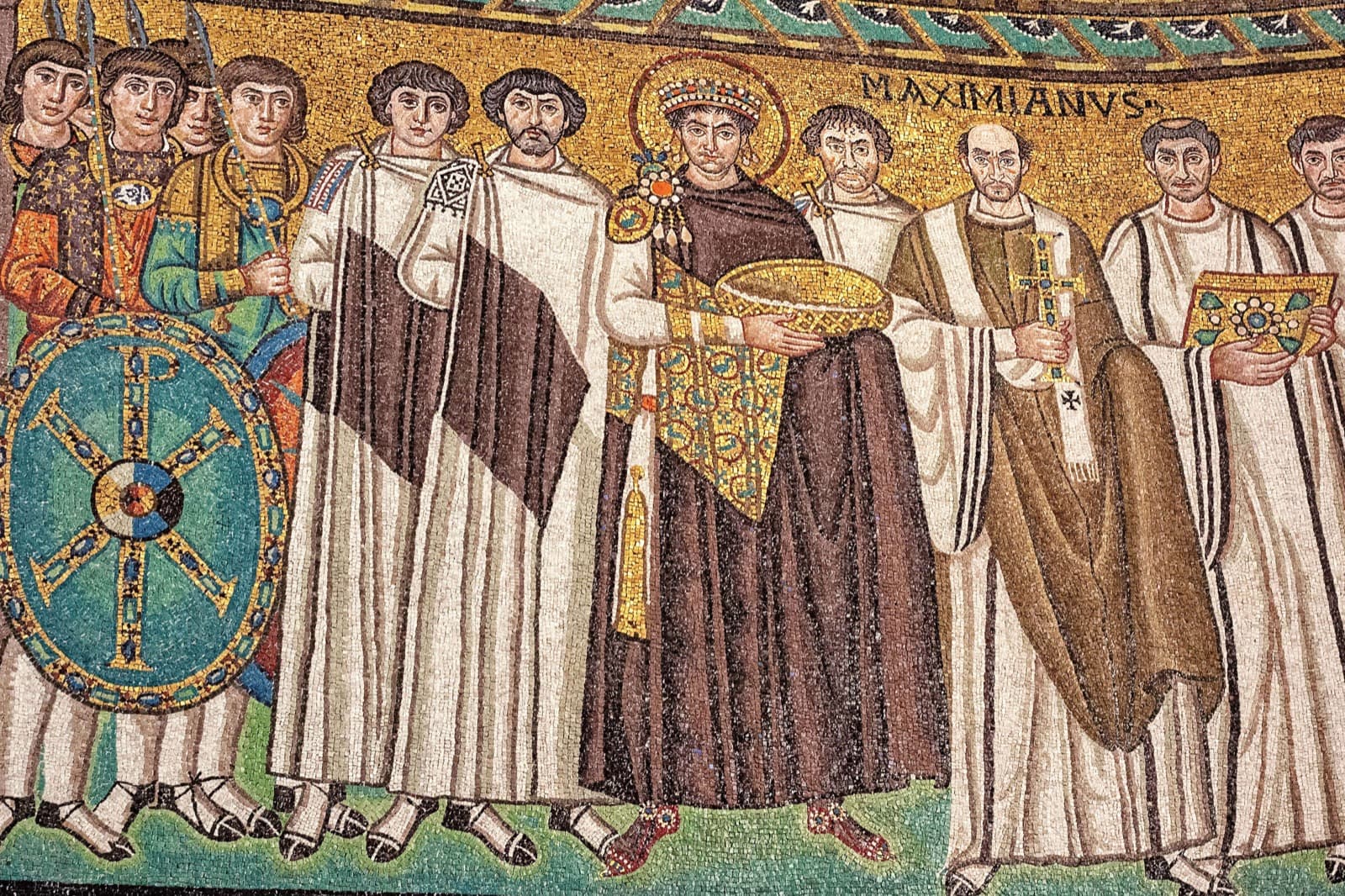
Declared a UNESCO heritage site in 1996, the Ravenna mosaics are among the most outstanding works of art ever, one of the places that everyone should admire at least once in their life.
Each of the five sites that house the mosaics is of incomparable beauty, and all of them leave you breathless. It is also likely that the Ravenna mosaics’ magnificent depictions inspired Dante in his descriptions of saints and blessed.
In Ravenna, Dante completed the Divine Comedy, writing the end of Purgatory and the entire Paradise. Upon his death in 1321, Dante became a cult object in Ravenna. Nevertheless, for a long time, Florence, Dante’s birthplace, and Ravenna fought over the Supreme Poet’s remains.
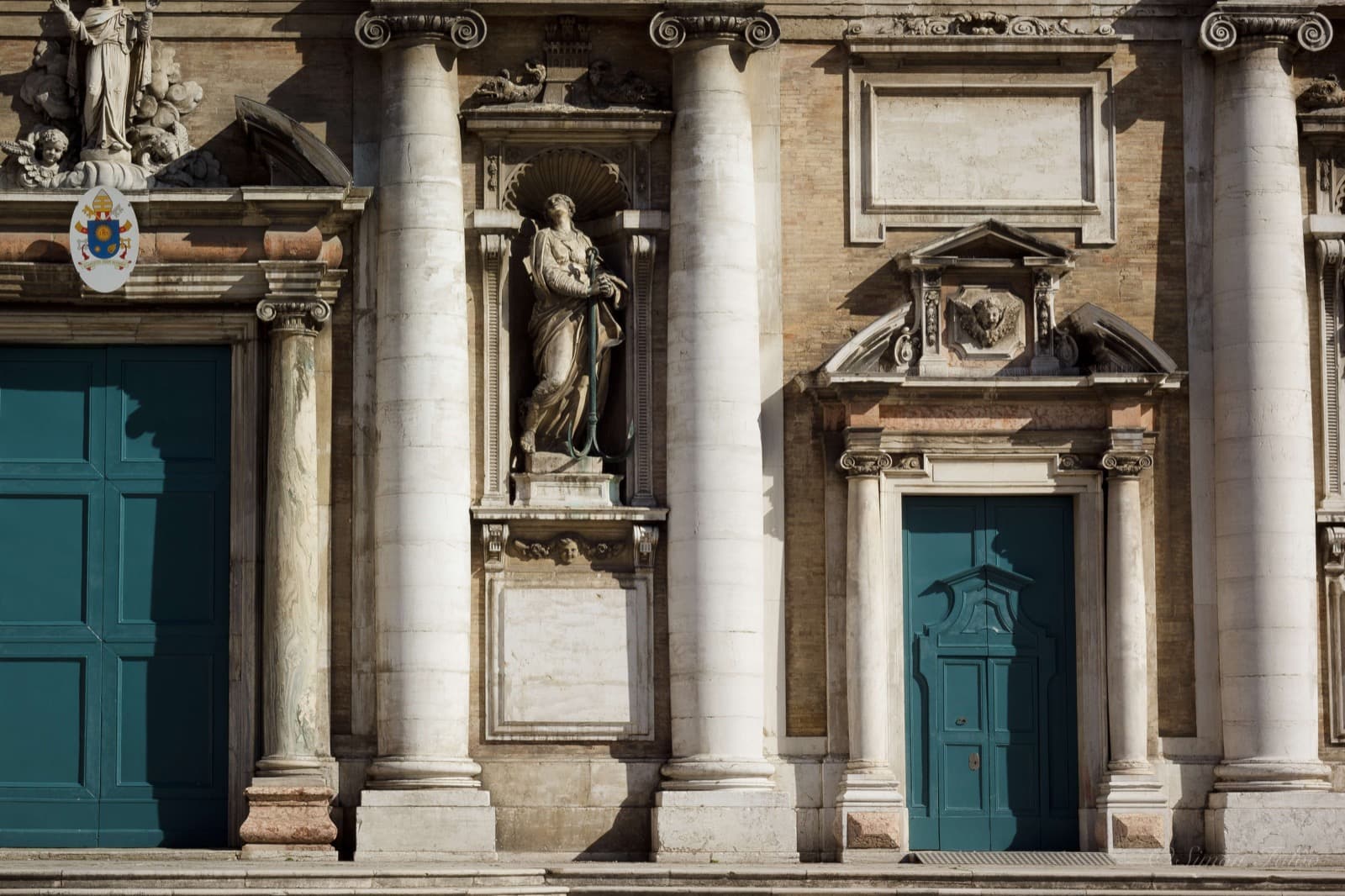
There are many references to Ravenna and its characters in the Divine Comedy.
The best-known episode is undoubtedly that of Canto V of Hell. In the Lustful circle, Dante meets Francesca da Rimini, daughter of the Lord of Ravenna, Guido da Polenta. The tragic story of her secret and illegitimate love with Paolo Malatesta is narrated in some of the most beautiful and famous lines of the Supreme Poet:
Sitteth the city, wherein I was born,
Upon the sea-shore where the Po descends
To rest in peace with all his retinue.Love, that on gentle heart doth swiftly seize,
Seized this man for the person beautiful
That was ta’en from me, and still the mode offends me.Love, that exempts no one beloved from loving,
Seized me with pleasure of this man so strongly,
That, as thou seest, it doth not yet desert me;Love has conducted us unto one death;
Caina waiteth him who quenched our life!
These words were borne along from them to us.(Dante Alighieri, Hell, Canto V, 97-108)
Dante's train: a slow journey through picturesque landscapes
UPDATE to August 3rd: Dante’s train has suspended its runs for 2023 due to renovations of the railway line and will start again in 2024.
The panoramic train that connects Faenza to Florence, which was nicknamed “Dante’s Train,” is perfect for those who want to travel slowly, reducing the environmental impact.
Lulled by the carriages’ rhythm, surrounded by beautiful sceneries, and free to hop off when you like, Dante’s Train is a fantastic way to visit some of the places traveled by the Poet during his long exile.
The stretch between Faenza and Borgo San Lorenzo is the most picturesque and offers a kaleidoscope of landscapes. Soft hills marked by the geometry of the rows of vines, areas covered with olive groves with their silver reflections, and the wildest areas of Mugello.
https://iltrenodidante.it/
https://iltrenodidante.it/
https://iltrenodidante.it/
https://iltrenodidante.it/
In the footsteps of Dante by train: the main stages
Faenza
Famous throughout the world for its artistic ceramics and majolica, Faenza is located along the ancient Via Emilia. A town of Roman origin, Faenza reached its peak in the Late Middle Ages and the Renaissance. Piazza del Popolo and the adjacent Piazza della Libertà, framed by beautiful ancient buildings, are the city’s heart.
In Piazza del Popolo, two buildings stand out. Palazzo del Podestà, with its typical medieval architecture, and Palazzo Manfredi, whose elegant arches and thin columns give the building a sense of lightness. It is also worth seeing the Voltone della Molinella, the vault decorated with delightful grotesques from the second half of the sixteenth century, connecting Piazza del Popolo with the Masini Theater.
Piazza della Libertà is equally scenic. The Renaissance Cathedral of Faenza, with its unfinished facade, evokes memories of San Petronio in Bologna. The Portico degli Orefici and the Monumental Fountain complete the splendid setting of the square.
The International Museum of Ceramics of Faenza, one of the world’s most important, is also worth visiting.
Brisighella
One glimpse is enough to see why Brisighella is considered one of the most beautiful villages in Italy. Surrounded by rolling hills with beautiful shades of green, Brisighella is a medieval village of incredible beauty in the Apennines’ heart.
Don’t be fooled by the size. There are so many things to do and see, and Brisighella deserves much more than a rushed visit. It’s worth spending at least one night so that you can also discover the splendid Regional Park of the Vena del Gesso Romagnola. The easy walk from Brisighella to the Carnè Refuge is a beautiful day trip that will make you explore a short section of Dante’s Way hiking trail, surrounded by incredible scenery.
Brisighella Clock Tower Ph. @VelvetEscape
Brisighella, panoramic view Ph. Velvet Escape
Brisighella, Via del borgo Ph. Velvet Escape
Brisighella, rooftops | Ph. Velvet Escape
The best way to enjoy Brisighella is to get lost in the alleys, which offer picturesque views. Do not miss the historic center, with its colorful houses, and the Via degli Asini (Donkeys’ Alley). This extraordinary elevated road, covered and illuminated by the arches visible from Via Naldi, dates back to the 12th century and represents a unique historical and architectural testimony.
Don’t be discouraged by the steep climbs that lead to the three rocky spurs that house three of the main monuments: the iconic Clock Tower, the Rocca, and the Monticino Sanctuary. The view over the rooftops and rolling hills, the idyllic landscape, will repay you for the effort. Sunset is one of the best times to go up to the Clock Tower when the low rays illuminate the tower and the hills with a golden light.
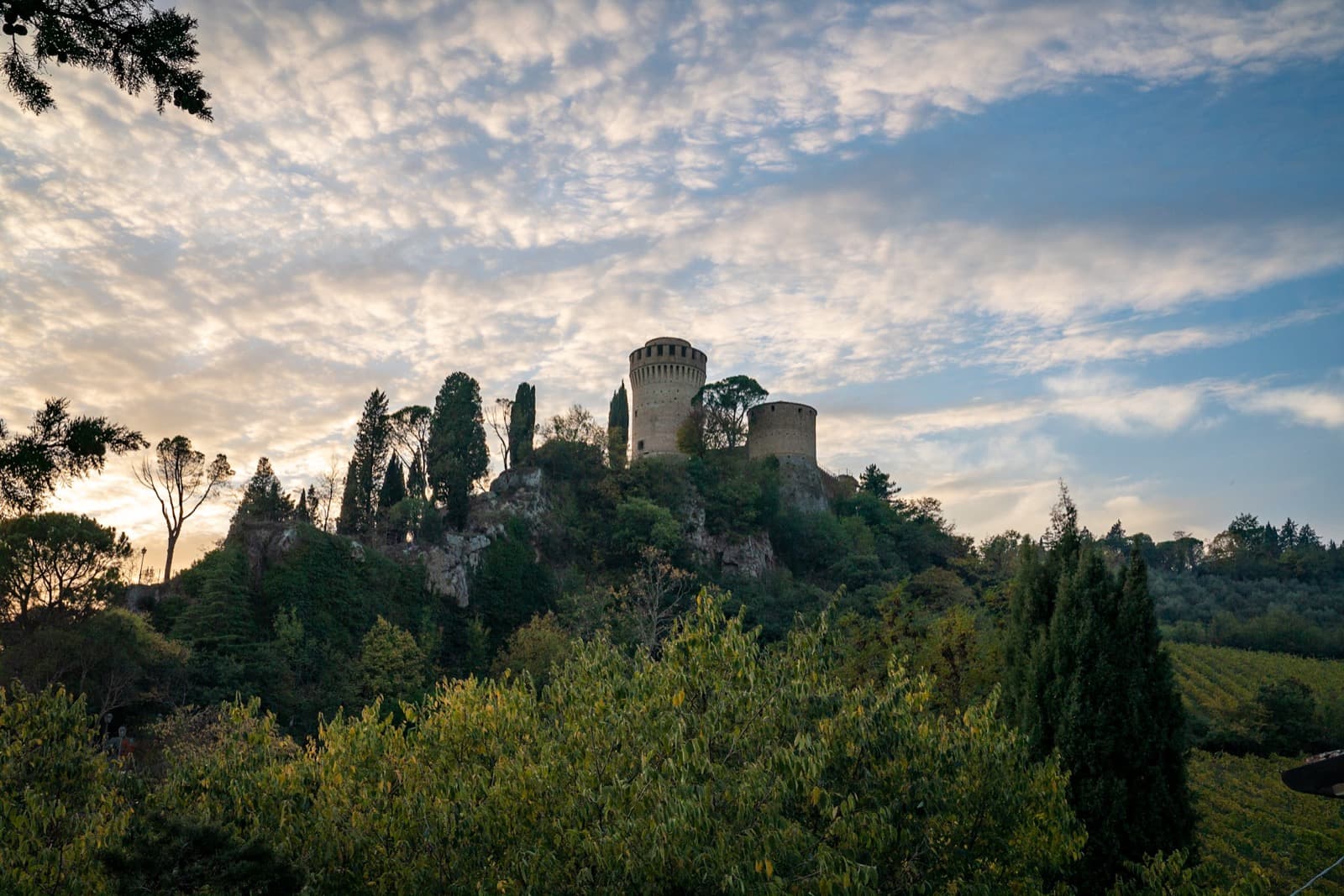
It is precisely the Clock Tower that recalls Canto XXVII of Hell. There Dante, without revealing the name, meets the Lord of Brisighella, Maghinardo Pagani da Susinana. The Lord of Brisighella had a defensive tower built on the spur of rock in 1290, where the Clock Tower stands today. Maghinardo fought alongside the Guelphs in Florence, in a battle in which Dante also took part, and subsequently espoused the Ghibellines’ cause in Romagna. Here’s how the Poet describes Maghinardo’s treason:
The cities of Lamone and Santerno
Governs the Lioncel of the white lair,
Who changes sides ’twixt summer-time and winter;(Dante Alighieri, Hell, Canto XXVII, 49-51)
Marradi
Marradi marks the passage between the Emilia-Romagna region and Tuscany. A border village, Marradi is known as the “Town of Chestnuts”, as well as being the birthplace of the poet Dino Campana. From the station, you can reach the historic center in less than 10 minutes on foot. As soon as you cross the bridge, you’ll get a delightful sight of the old houses reflecting in the waters of the Lamone River.
The village is small but lovely. It should be discovered by wandering around, getting lost in the back alleys, and ready to discover hidden corners.
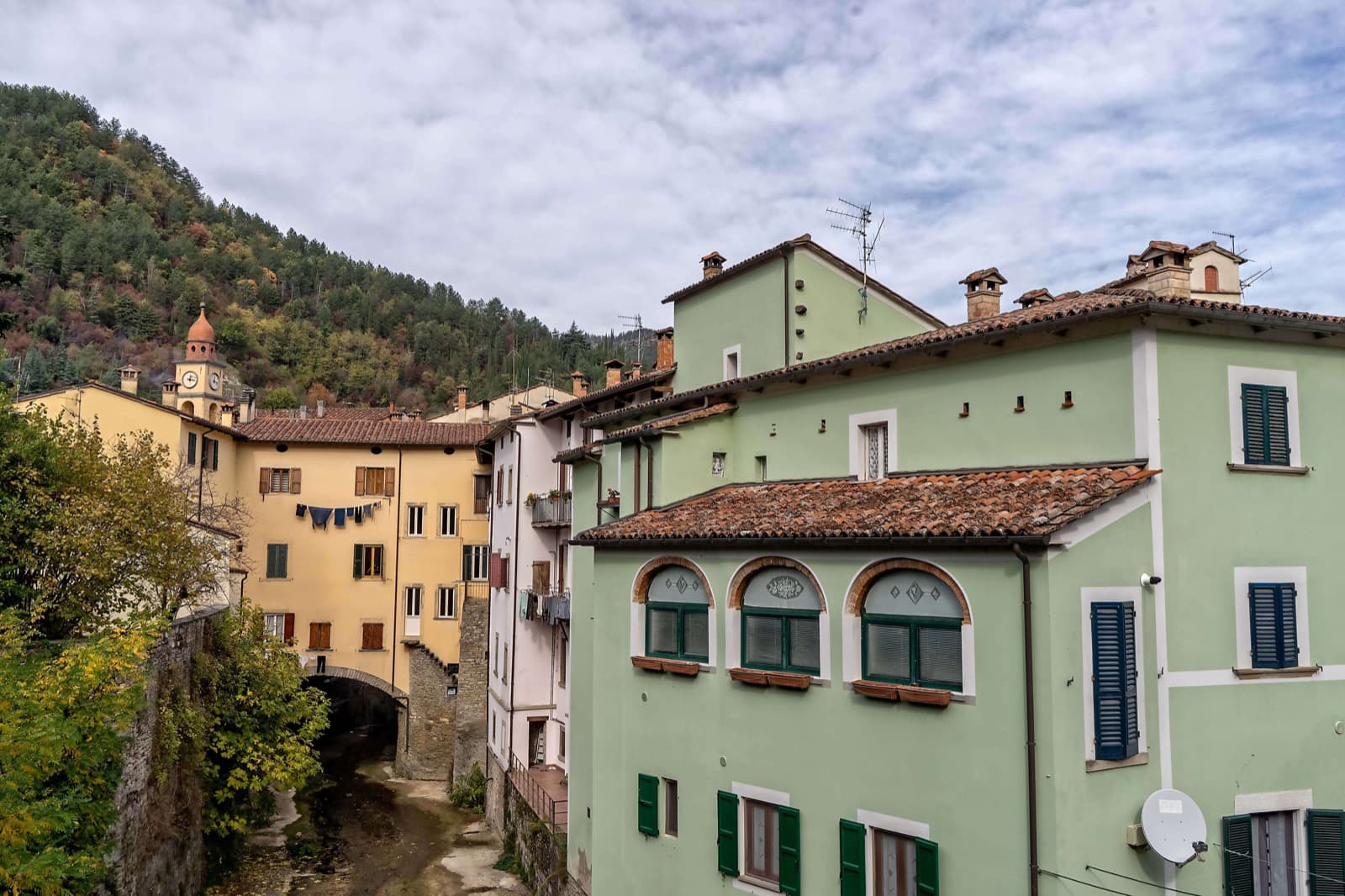
If you like chestnuts, it’s worth browsing the small shops that sell typical products, all made of or processed from the fruit.
By train, from Borgo San Lorenzo to Florence
Once in Borgo S. Lorenzo, you can continue towards Florence on Dante’s train, or choose the variant that follows the Sieve river. The detour is worthwhile. First, because the most scenic stretch of Dante’s Train ends shortly after Borgo San Lorenzo. Furthermore, the itinerary from Borgo San Lorenzo to Florence is full of history and an opportunity to visit pretty villages.
In this area, you will discover more places that are part of the Vie di Dante, moving from Mugello towards the Casentino.
Dicomano
In Dicomano, a small village between Romagna and Tuscany, you’ll feel like stepping back in time. The town winks very little at tourists, and it is precisely its authenticity that fascinates.
Under the arcades of Via Dante Alighieri, the main street, middle-aged people gather for a game of cards or to have a chat. You meet ladies with shopping bags, and people on bicycles.
In short, everyday life, which feels like a breath of fresh air.
At the end of Via Dante, a narrow passage leads to a small road that runs alongside the Comano stream. It is a short stretch where you can stroll, savoring the peace, silence, and tranquility, which offers picturesque views of Dicomano.
Also worth a visit is the Pieve di Santa Maria, located on a small hill not far from the center, from where you can admire the surrounding landscape.
Pontassieve
Along the railway line that connects Borgo S. Lorenzo to Florence, after Dicomano, you reach Pontassieve, a town overlooking the Sieve river, not far from where it flows into the Arno.
As you stroll in the small historical center, you’ll encounter the most characteristic buildings: the remains of the Castle of Sant’Angelo and the ancient access gates, the imposing Porta Aretina, also called the Clock Tower, and Porta Filicaia, whose arch frames the entrance to the old village.
The most scenographic spot in Pontassieve, however, is the Mediceo Bridge.
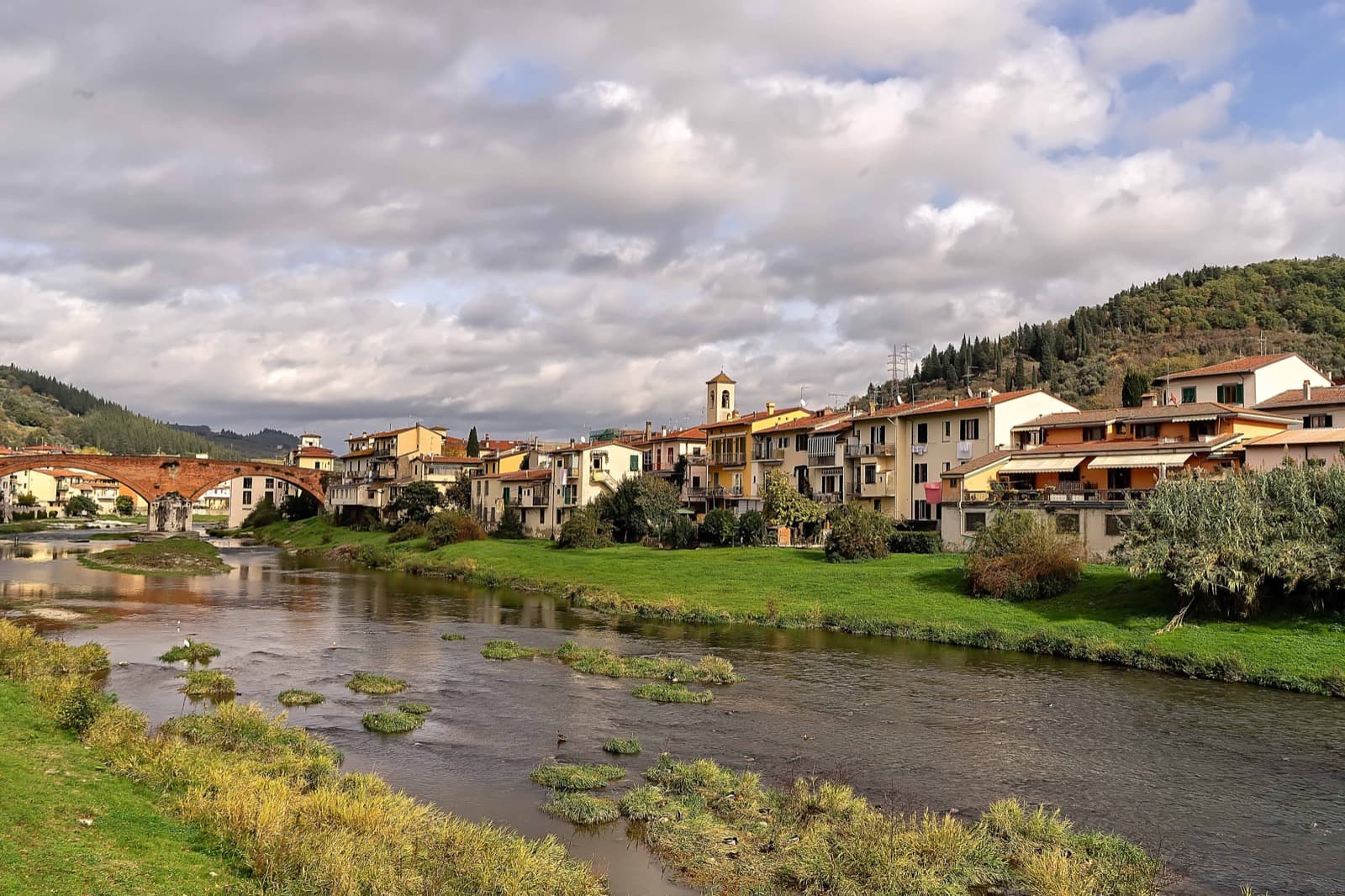
Erected in the 16th century at the behest of Cosimo I De’ Medici, the bridge was built to connect the road that led from Florence to Mugello, Casentino, and finally to Arezzo. The bridge’s construction also influenced the name of the village, which was transformed from Castel Sant’Angelo to Ponte a Sieve (Pontassieve). It is worth admiring the bridge from different points of view: at river level, to savor the red of the bricks, the green of the meadows and the colors of the houses reflected in the water, and also from above, to better enjoy the surrounding hills.
Florence: the cradle of the Renaissance and Dante
The train journey that mostly retraces the Cammino di Dante ends in Florence, the city which gave birth to the Supreme Poet and is universally considered the cradle of the Renaissance.
Starting from Ravenna and the Poet’s Tomb, Dante’s House is the ideal arrival point for Dante’s Way. However, it is good to know that the building, which also houses the Historical Museum, was rebuilt at the beginning of the twentieth century, where the Alighieri family’s homes were located.
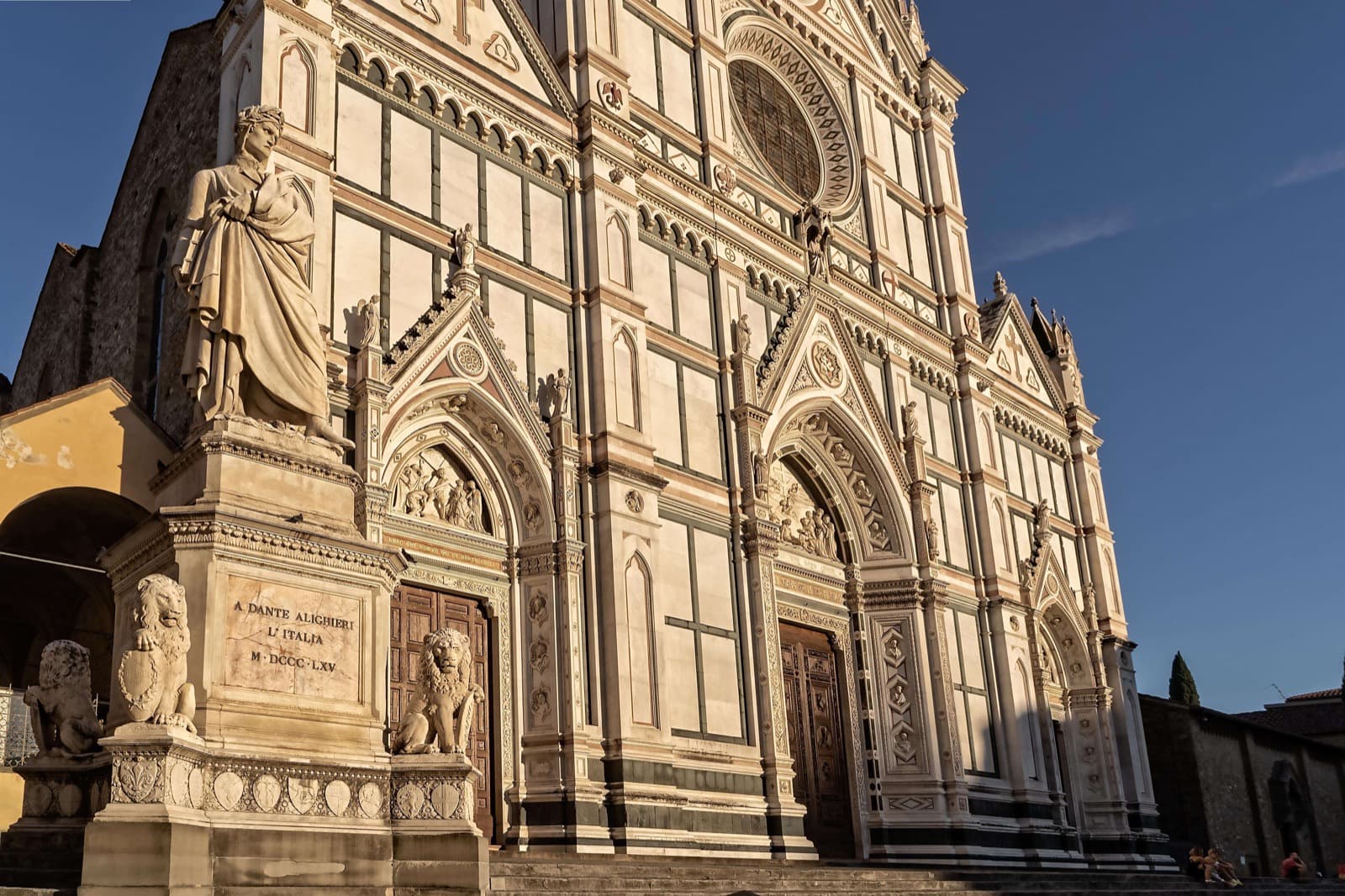
One of the most beautiful places to remember the Poet is the beautiful Basilica of Santa Croce. To the left of the façade, a large statue of Dante, whose deep and perhaps a little frowning gaze scans the large square, invites a moment of reflection and introspection.
The wonderful Baptistery of San Giovanni, where Dante was baptized in 1266, is another must-see. At the beginning of Paradise Canto XXV, Dante tells of his forlorn hope of returning to his native Florence and the Baptistery, where his faith began.
If e’er it happen that the Poem Sacred,
To which both heaven and earth have set their hand,
So that it many a year hath made me lean,O’ercome the cruelty that bars me out
From the fair sheepfold, where a lamb I slumbered,
An enemy to the wolves that war upon it,With other voice forthwith, with other fleece
Poet will I return, and at my font
Baptismal will I take the laurel crown;Because into the Faith that maketh known
All souls to God there entered I, and then
Peter for her sake thus my brow encircled.(Dante Alighieri, Heaven, Canto XXV, 1-12)
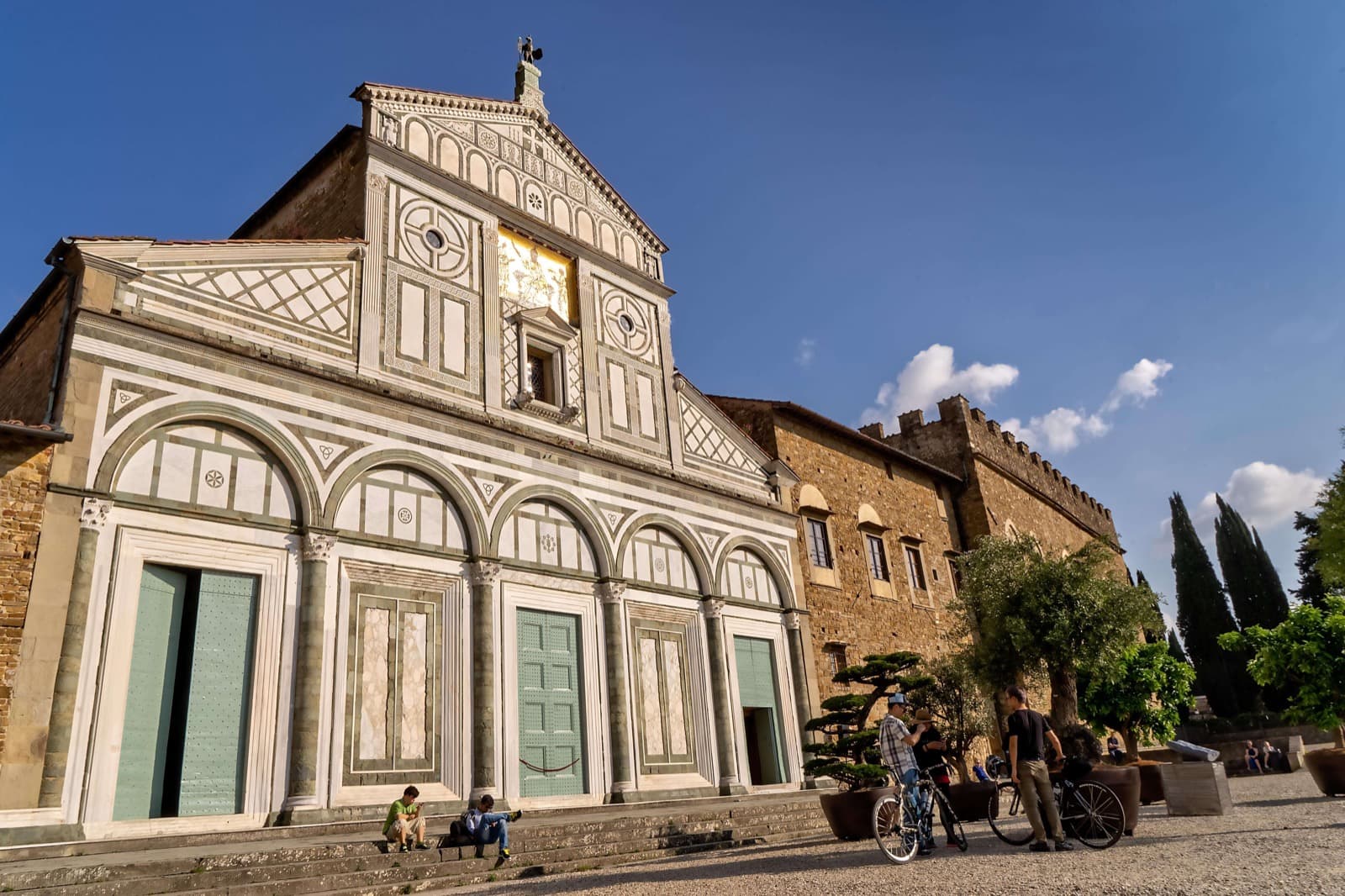
Many places in Florence preserve testimonies of Dante. One above all, not to be missed, is the beautiful Abbey of San Miniato al Monte, of Romanesque origin. Shrouded in intense spirituality, it also offers one of the most evocative views of Florence.
Whether you have read the entire Divine Comedy or not, the Roads of Dante will make you discover hidden corners, little-known villages, and beautiful landscapes. Slowly, on foot, by bike, or by train, you’ll come into contact with an unusual Italy, off the beaten track, and, above all, incredibly authentic.
Author

Simon Falvo
A solo traveler for 20+ years, Simon Falvo is passionate about nature and hiking and also art, architecture, and design. She is always on the look for lesser-known destinations, and in her blog, Wild About Travel, she tells stories of her journeys in words and photography.
You may also like
Discover Ravenna (Emilia-Romagna, Italy): Best Things to Do in the city
by Davide Marino /// November 16, 2017
The Divine Commedy in the Unesco Mosaics of Ravenna
by Davide Marino /// December 3, 2020

Interested in our newsletter?
Every first of the month, an email (in Italian) with selected contents and upcoming events.
Dante’s Ravenna: the most famous places of the city in 11 stages
by Davide Marino /// September 7, 2018
Hiking and Cycling Dante’s Way
by Margherita e Nick The Crowded Planet /// November 23, 2020

